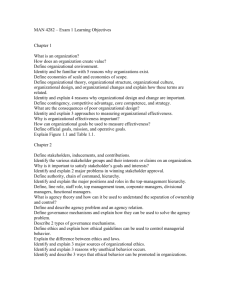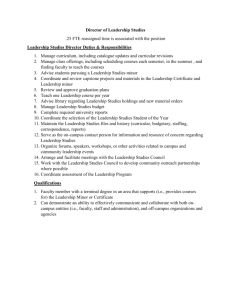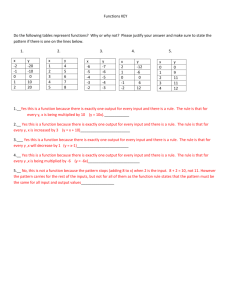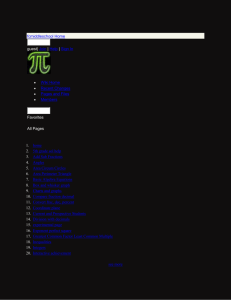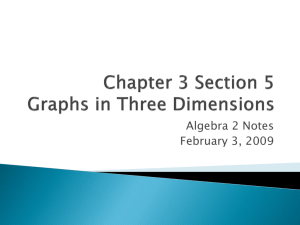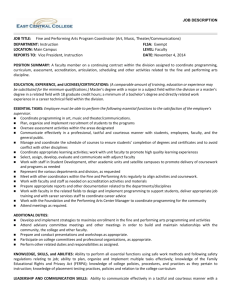Integrating Mechanisms
advertisement
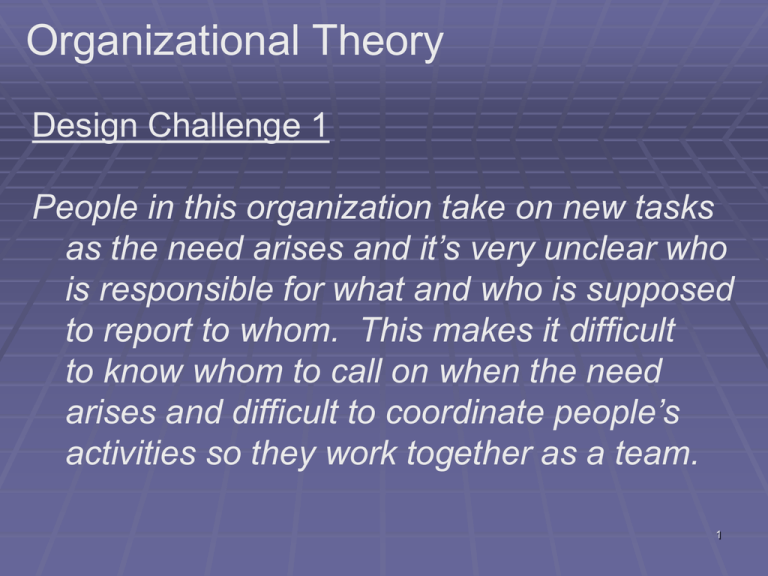
Organizational Theory Design Challenge 1 People in this organization take on new tasks as the need arises and it’s very unclear who is responsible for what and who is supposed to report to whom. This makes it difficult to know whom to call on when the need arises and difficult to coordinate people’s activities so they work together as a team. 1 Organizational Theory Differentiation is the process by which an organization allocates people and resources to tasks and establishes the authority relationships that allow the organization to achieve its goals. In other words, it’s “how things are divided up.” 2 Organizational Theory Authority is the power to hold people accountable for their actions and to make decisions concerning the use of resources. Control is the ability to coordinate and motivate people to work in an organization’s interests. 3 Organizational Theory A function is a subunit composed of a group of people who possess similar skills and knowledge to perform their jobs. marketing dept. maintenance dept. A division is a subunit that consists of a collection of functions that are related to a particular good or service. Motorola’s semiconductor division 4 Organizational Theory Vertical differentiation refers to the way an organization designs its hierarchy of authority (i.e., reporting relationships). Horizontal differentiation refers to the way an organization groups tasks into roles and roles into subunits (i.e., functions and divisions). 5 Organizational Theory Design Challenge 2 We can’t get people to communicate and coordinate in this organization. Specifying tasks and roles is supposed to help coordinate the work process, but here it builds barriers between people and functions. 6 Organizational Theory Although horizontal differentiation enables specialization and increased productivity, it also leads to subunit orientation. Subunit orientation refers to the tendency to view one’s role in the organization strictly from the perspective of the time frame, goals, and orientation of one’s subunit. 7 Organizational Theory Integration is the process of coordinating various tasks, functions, and divisions so that they work together and not against each other. There are various integrating mechanisms used by managers to coordinate behavior, and they are presented in order of increasing complexity: 8 Organizational Theory Integrating Mechanisms 1) Hierarchy of Authority—“who reports to who” 2) Direct Contact—managers meet face to face to coordinate activities 3) Liaison Role—A specific manager is given responsibility for coordinating with managers from other subunits on behalf of their subunit 9 Organizational Theory Integrating Mechanisms 4) Task Force—Managers meet in temporary committees to coordinate cross-functional activities 5) Team—Managers meet regularly in permanent committees to coordinate activities 10 Organizational Theory Integrating Mechanisms 6) Integrating Role—A new role is established to coordinate the activities of two or more functions or divisions 7) Integrating Department—A new department is created to coordinate the activities of functions or divisions 11 Organizational Theory The key issue for managers is finding the level of differentiation that reaps the benefits of specialization while also utilizing the level of integration that keeps subdivisions communicating with each other. The issue is balance between differentiation and integration. 12 Organizational Theory Design Challenge 3 People in this organization don’t take responsibility or risks. They are always looking to the boss for direction and supervision. As a result, decision making is slow and cumbersome, and we miss out on a lot of opportunities to create value. “Hierarchy is an organization with its face toward the CEO and it’s a– toward the customer.” -- Kjell Nordstrom and Jonas Ridderstrale, Funky Business 13 Organizational Theory Design Challenge 4 People in this organization pay too much attention to the rules. Whenever I need somebody to satisfy an unusual customer request or need real quick service from another function, I can’t get it because no one is willing to bend or break the rules. 14 Organizational Theory All organizations rely, to some degree, on rules to control behavior. A challenge facing all organizations is the ability to design a structure that achieves the right balance between standardization and mutual adjustment (DMP prefers to use the term discretion). 15 Organizational Theory Standardization is conformity to specific models or examples (rules and norms). Mutual adjustment (discretion) is the process of allowing people to use their judgment rather than standardized rules to address a problem. 16 Organizational Theory Mechanistic structures are designed to induce people to behave in predictable ways. Decision making is centralized Subordinates are closely supervised Information flows downward in the hierarchy Tasks are clearly defined Integrating mechanisms are simple Work is very standardized 17 Organizational Theory Organic structures promote flexibility, so people initiate change and can adapt quickly to changing conditions. Decision making is decentralized Roles are loosely defined Integrating mechanisms are complex Reliance on mutual adjustment (discretion) Information flows freely 18 Organizational Theory Contingency Approach: design of an organization’s structure is tailored to the sources of uncertainty facing an organization Organization should design its structure to fit its environment 19 FIGURE 4-10 The Relationship Between Environmental Uncertainty and Organizational Structure Low Environmental Uncertainty High Mechanistic Structure Organic Structure Simple structure Complex structure Low differentiation High differentiation Low integration High integration Centralized decision making Decentralized decision making Standardization Mutual adjustment 20 21 22

